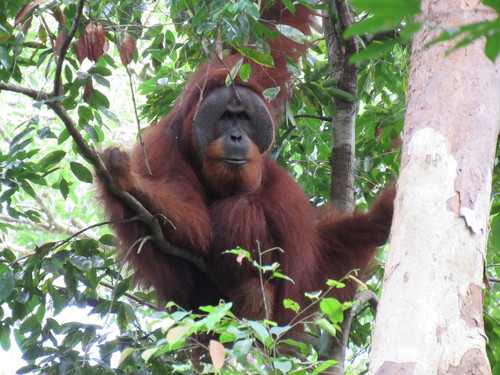
Sumatran Orangutan
The Sumatran orangutan (Pongo abelii) graces Sumatra's lush canopies with its vibrant red fur and solitary grace. This critically endangered ape navigates the treetops, playing a crucial role in seed dispersal while feasting on forest fruits. Its intelligence and gentle demeanor captivate all who observe it.
30-40 years
Lifespan
30.0 kg
Weight
Height: 1.25 - 1.5 m
Size
Brown, Grey, Red, Orange
Color
12-15 years
Age of Sexual Maturity
3 years
Age of Weaning
2.7 mph
Top Speed
Critically Endangered
Conservation Status
Decreasing
Population Trend
Characteristics
Pongo abelii, commonly known as the Sumatran orangutan, is a critically endangered species native to the rainforests of Sumatra, Indonesia. Known for its distinctive red-orange fur and remarkable intelligence, this arboreal ape spends most of its life in trees. It has a highly solitary lifestyle and a diet mainly consisting of fruit.
Distribution Range of the Sumatran Orangutan
Pongo abelii, commonly known as the Sumatran orangutan, is native to the island of Sumatra in Indonesia. Its geographical distribution is restricted to the northern part of the island, particularly within the provinces of Aceh and North Sumatra.
Sumatran Orangutan's Habitat
Environmental Conditions
The Sumatran orangutan inhabits tropical rainforests, preferring lowland and montane forests up to altitudes of about 1,500 meters. These forests are characterized by high humidity, consistent rainfall, and a warm climate, with temperatures typically ranging from 21°C to 28°C (70°F to 82°F).
Ecological Niche
The Sumatran orangutan is primarily arboreal, spending most of its life in the forest canopy. It plays a crucial role in seed dispersal, contributing to forest regeneration. These orangutans are frugivorous, with a diet mainly consisting of fruit, but they also consume leaves, bark, and insects. Their arboreal lifestyle and diet are well-adapted to the dense, multi-layered structure of tropical rainforests.
Copyright @ Nature Style Limited. All Rights Reserved.
 English
English